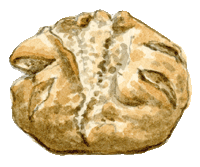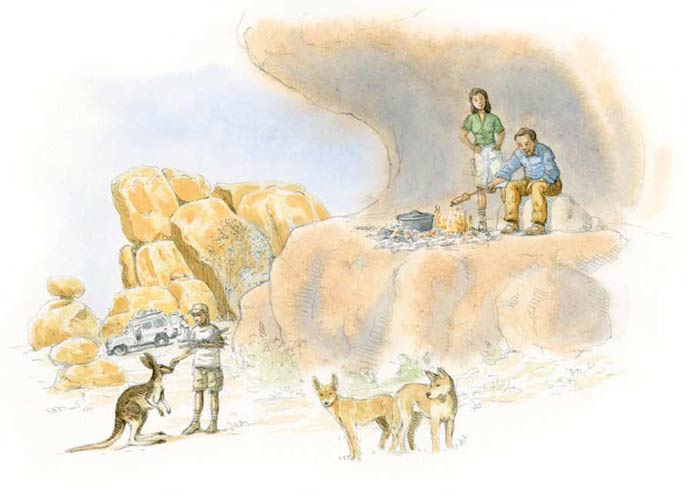damper

Form: Leavened (risen) bread
Country of origin: Australia (Damper)
What distinguishes it from other methods of bread making: Risen bread cooked in ashes
Category of bread: (3) Originally cooked in the ashes of the campfire, damper was left long enough for it to form a crust and therefore to enter into the rather restricted “club” of crusty or even crispy breads
Particularity: First made by nomads and Australian stockmen
Ingredients: Wheat flour; leaven (sourdough starter) or baker’s yeast; butter; salt; water

Australia (Damper)
Exploration of the Australian continent was obviously not assigned to angels. Between the first timid steps by the Dutchman Willem Jansz in 1606 and the systematic colonization of these territories in the 19th century, territories the Aborigines had inhabited since time immemorial, these pioneers were faced with an extraordinary challenge, and feared neither God nor man. Like sailors taken prisoner at sea for unknown periods of time, the conquest was necessarily confronted with how to maintain a continuous food supply. Damper was the answer.
The answer was to always have on hand wheat flour, baking powder, and milk or a little fat, then to find water and knead all thee ingredients together to obtain a homogeneous, flexible dough. Damper was shaped into more or less large round bread, placed under the still-burning ashes and left there the time required to obtain a risen, deliciously crispy bread.
This bread traveled with the Australian colonists on their odysseys. It is a symbol of “being alive”, even though today, the bread that bakers in large metropolises offer today is a far step away from the original damper. The intention of today’s bakers is obviously to tug at the heartstrings of Australians. There are however some folkloric aspects that are patiently and artificially maintained, such as Burdekin duck, a meal eaten by the first colonists. This consists of damper stuffed with corned beef, which instead of being cooked in the ashes, is fried in a billycan set on top of the ashes. The name itself maintains the memory of its origin: the idea of this typical meal goes back to the pioneers settled near the Burdekin River in Queensland.

